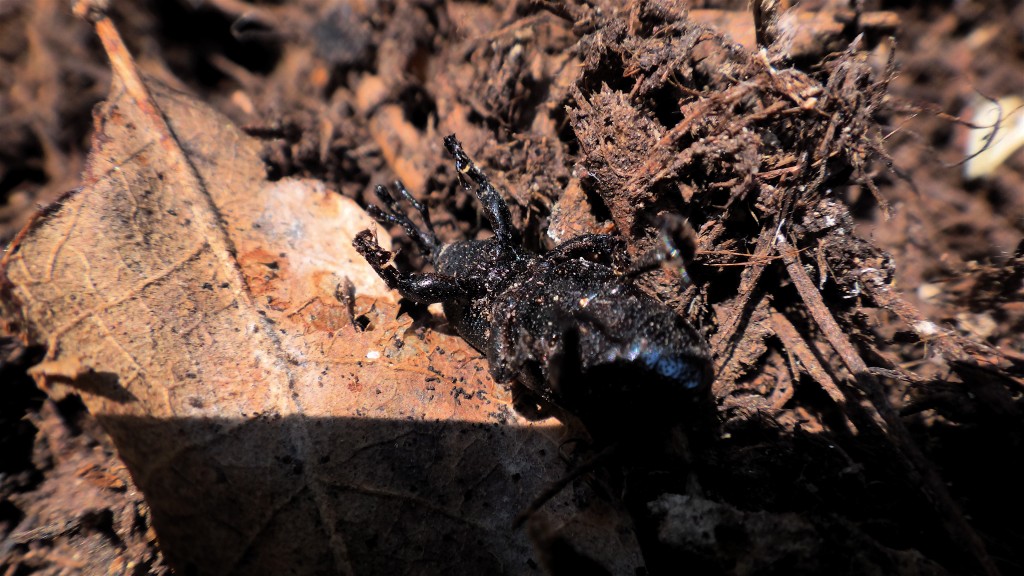 I have been watching one of my soft leaf yuccas turn paler and paler recently. At first I thought it was due to the drought (though I thought this very much out of character with this tough plant). I gave it a little more of the wet stuff but it continued to decline. I decided to dig it out and as I suspected (but was in complete denial about), found the Nazgul had struck once again in the Patch. In fact, not just one of them had been deep mining this time, but three of the retched dark creatures.
I have been watching one of my soft leaf yuccas turn paler and paler recently. At first I thought it was due to the drought (though I thought this very much out of character with this tough plant). I gave it a little more of the wet stuff but it continued to decline. I decided to dig it out and as I suspected (but was in complete denial about), found the Nazgul had struck once again in the Patch. In fact, not just one of them had been deep mining this time, but three of the retched dark creatures.
 “Blinded by their greed, they took them without question, one by one falling into shadow. They will never stop hunting your specimen plants.”
“Blinded by their greed, they took them without question, one by one falling into shadow. They will never stop hunting your specimen plants.”
This takes the snout nose weevil’s death count up to three mature Agave americana and this yucca so far this year and has forced me to go into a diatomaceous earth regimen around all my remaining yuccas in an attempt to keep these pests away…time will tell. If this fails I will move onto much stronger methods of control.
I am concerned presently not only with the evil weevil but also this:
 Just how much contact does she have with the Naboo when I am away, or not looking? She has begun creating these tribal tortilla “masks” in a matter of seconds of sitting down in a restaurant, and I must say, she is getting rather adept at constructing them. Although she is enrolled in a dual language program, I am pretty sure that the rapid mouth clicks she now practices over dinner are not part of the regular AISD curriculum.
Just how much contact does she have with the Naboo when I am away, or not looking? She has begun creating these tribal tortilla “masks” in a matter of seconds of sitting down in a restaurant, and I must say, she is getting rather adept at constructing them. Although she is enrolled in a dual language program, I am pretty sure that the rapid mouth clicks she now practices over dinner are not part of the regular AISD curriculum.
http://www.youtube.com/watch?v=c246fZ-7z1w&feature=player_embedded
 And even stranger is that Kumo seems to understand and interpret these clicks and clacks as commands. Here he is directing an impending aeronautic turn (his second job).
And even stranger is that Kumo seems to understand and interpret these clicks and clacks as commands. Here he is directing an impending aeronautic turn (his second job).
Talking of masks…
The wolf-like head markings on this young Black and Yellow Argiope
Argiope aurantia
spider, gives potential predators the illusion of a much larger creature.
Here is a close-up of the adult:
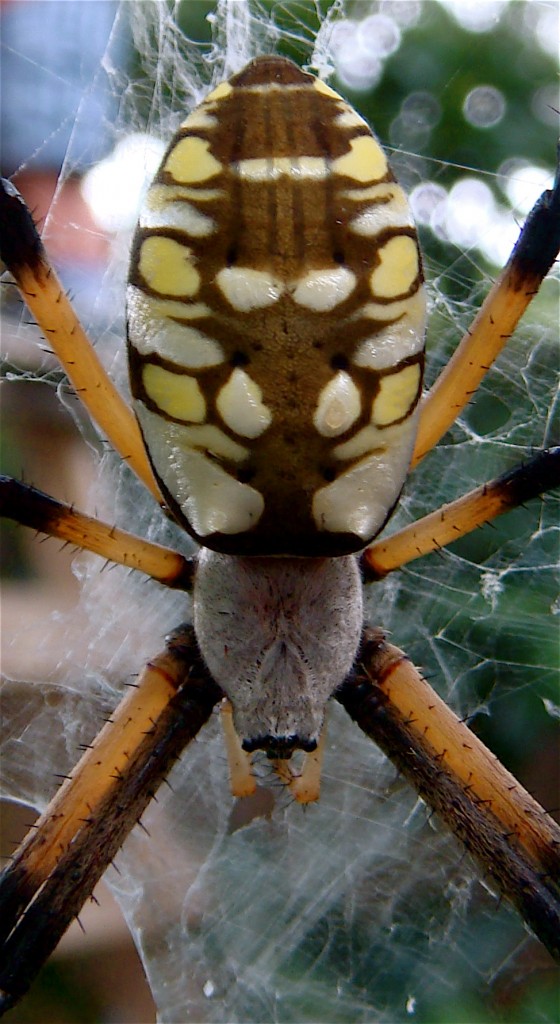 I am always happy to see these beneficial spiders around as they seem to be less and less prevalent around the Patch.
I am always happy to see these beneficial spiders around as they seem to be less and less prevalent around the Patch.
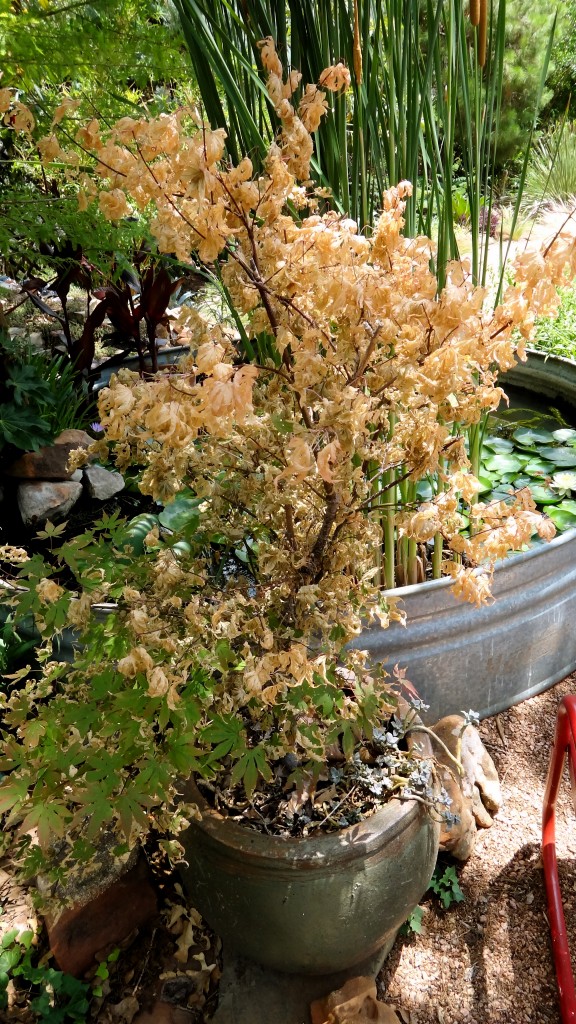
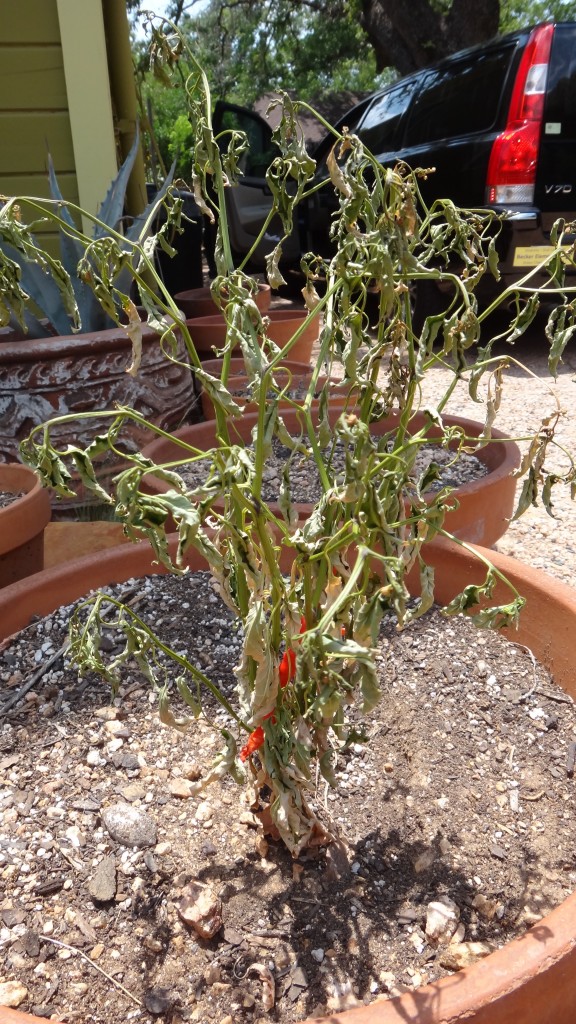 The furnace-like Texas winds continue to take their toll in the Patch, frying my Japanese maple and this pepper to a crackling crisp even before summer officially begins on Tuesday.
The furnace-like Texas winds continue to take their toll in the Patch, frying my Japanese maple and this pepper to a crackling crisp even before summer officially begins on Tuesday.
In stark contrast, this stock tank filled with King Tut Papyrus and various canna lilies relish the heat. A great combination so long as the planter is kept moist. I fill this tank up so that there is an inch of water above the soil level, this keeps it very happy for a couple of weeks, until the next top-up.
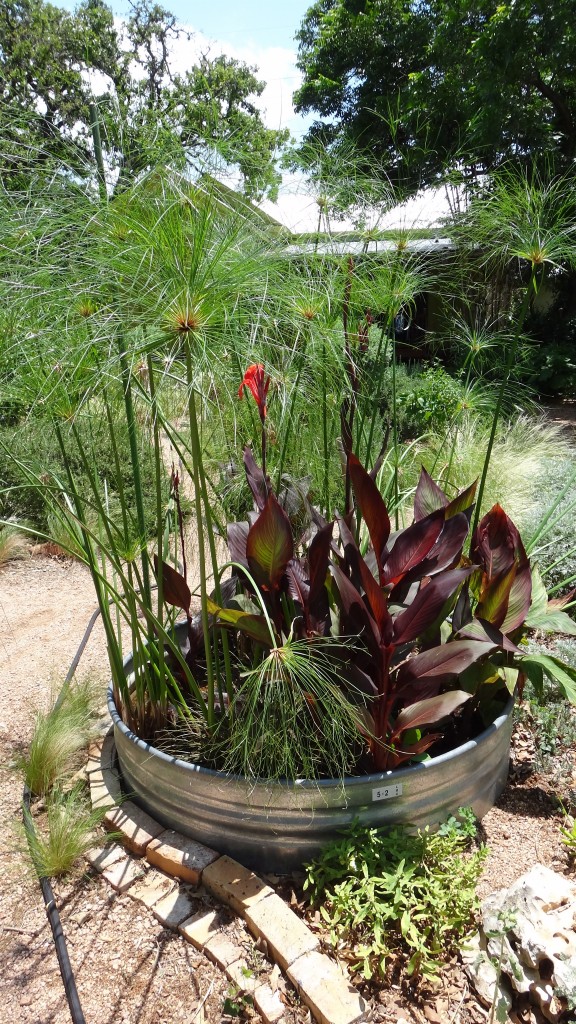
Moving on to a suburban front garden make-over:
This one felt a little like:
With the brunt of the work being implemented in a couple of days, followed by a lot of:
and…

Ahhing. “Its that tendon again isn’t it George? I told you not to over-do things.”
Here is where it started…St Augustine grass in decline due to insufficient light from a spectacular front garden tree.

The planting and foundation bed was just too small to add any real presence to this area, everything needed a little help and punctuating definition. The first thing to go was that plastic edging, naturally.
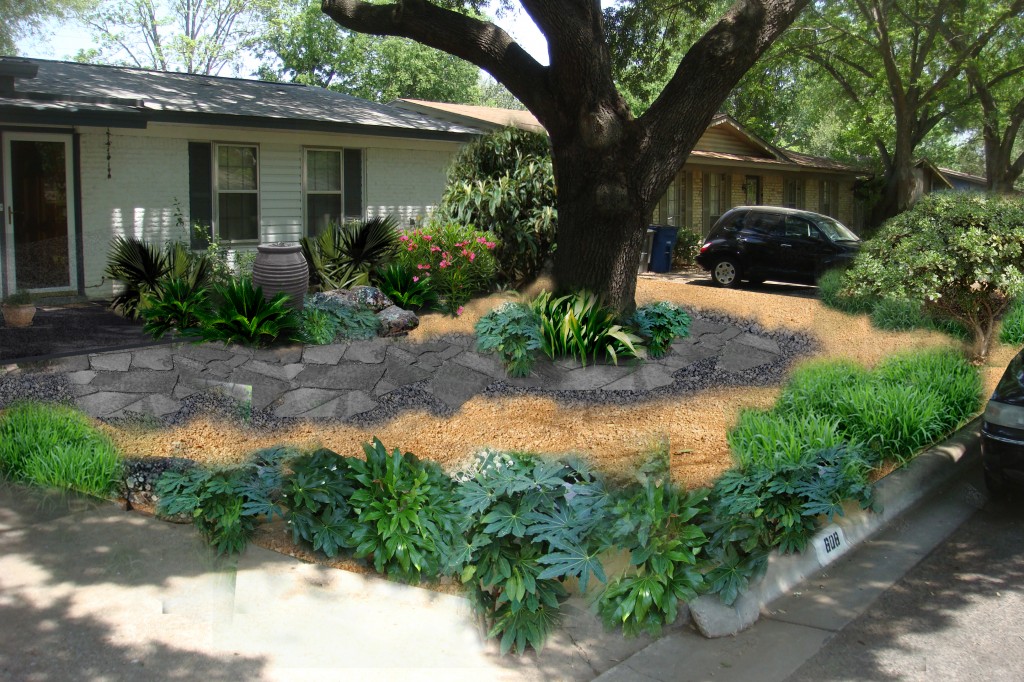
Here is the initial design visualization that I presented to the client. The back-bone of the plan was very well received but the plant selection I proposed needed some tweaking with some client preferred plant selections. Also instead of referencing the dark gray of the trim and roof, it was decided that the grey flagstone should be replaced with a paler color to reference the house color. Moss boulders were substituted for limestone in the final scheme.

Raw materials arrived, in parallel to the

the foundation bed-enlargement, prep work, soil amendment and total grass eradication activities.
The final result:

The front garden now blends out from the house – an aesthetic extension that anchors the home with the decorative flagstone that draws attention and the eye around the focal front tree. The corner front bed receives more sunlight and is planted up with purple fountain grasses and a knockout rose.
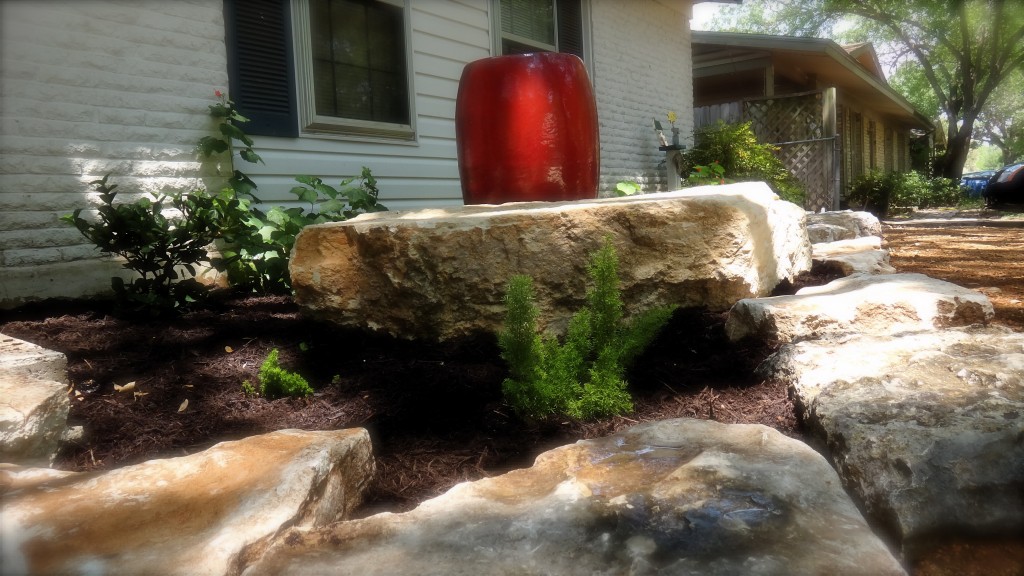
Limestone boulders of varying scale (one huge one, naturally) now line the larger house foundation bed and are partially buried to offer an embedded, naturalized look. The colors of the boulders work well against the white of the house and the tan of the granite. The ornamental red urn pops out some warmth and vertical stature to the scene. Pockets of fox-tail ferns will spread like miniature fir woodlands over time, filling in the designated areas.
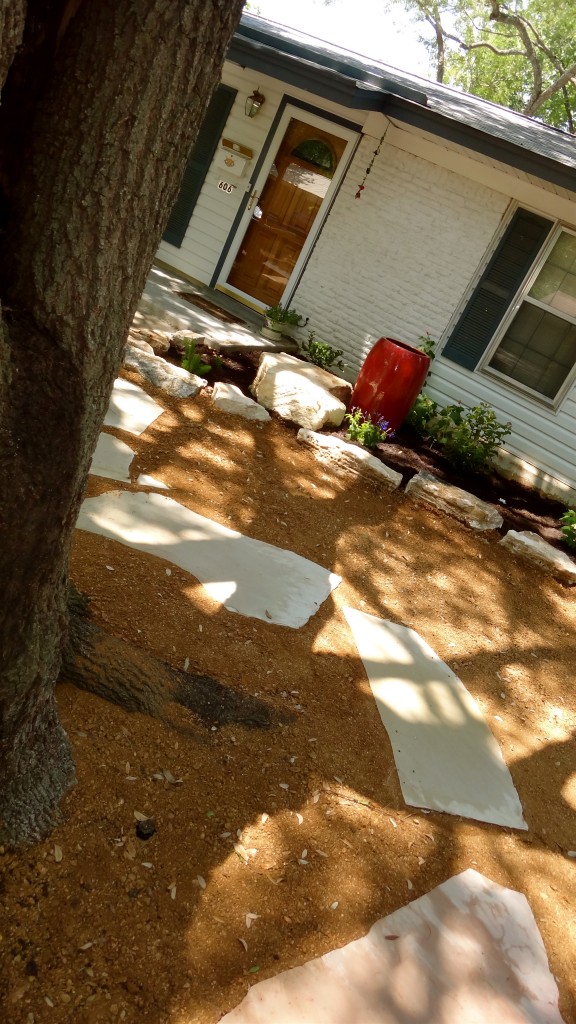
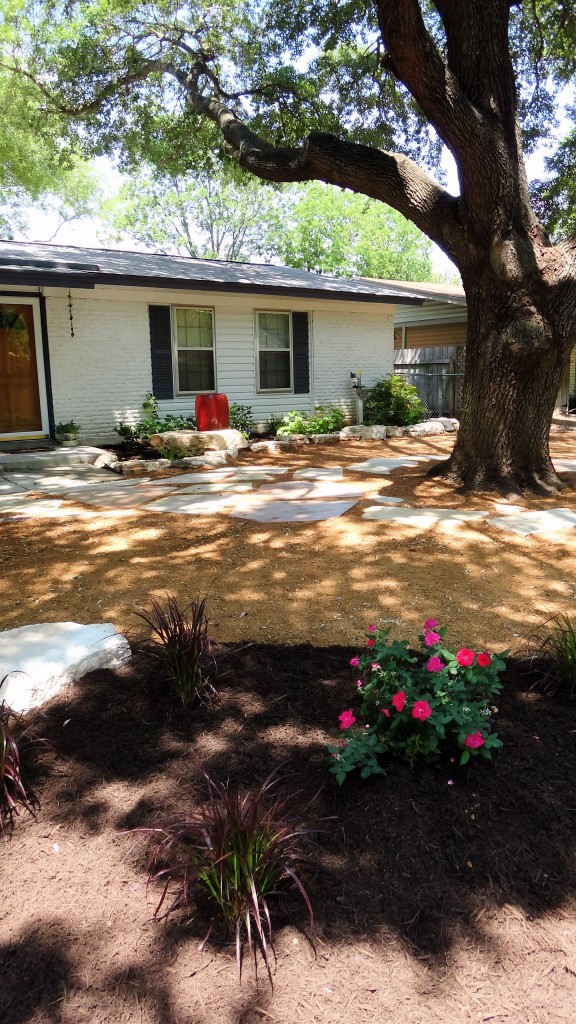

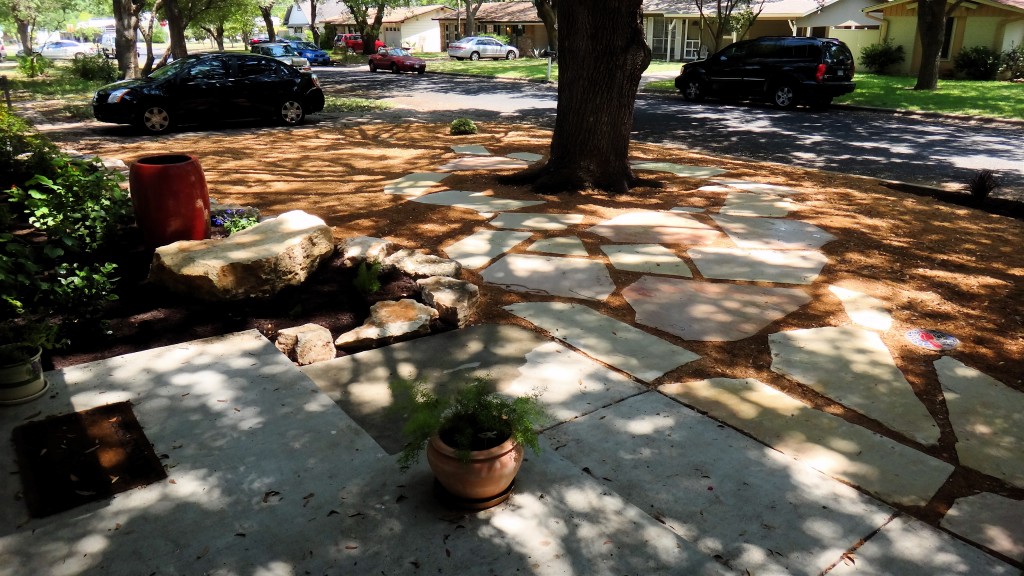
Once these plants get established most of the sprinklers in this front garden will be permanently turned off, reducing the homeowners water bills.
Inspirational images this week:
Now these trees are tough, just look at that terrain…and to think I moaned about what lurked under the ground at Mt Bonnell! This scene looks like a set from:
![]()
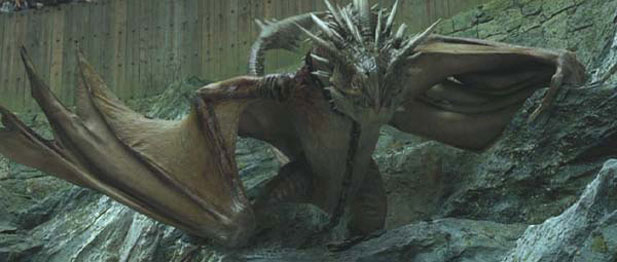 The Dragon Tree is related to Agave and Yucca and it is most unusual with its mushroom-like form. It is a rare subtropical tree that is endemic to Canary Islands, Madeira & Cape Verde, where only a few specimens can be found growing naturally on the islands of Tenerife and La Palma in dry bush at the low elevations of the islands’ rocky mountain ranges. Many ancient examples are 20 to 30 feet tall and believed to be up to a thousand years old.
The Dragon Tree is related to Agave and Yucca and it is most unusual with its mushroom-like form. It is a rare subtropical tree that is endemic to Canary Islands, Madeira & Cape Verde, where only a few specimens can be found growing naturally on the islands of Tenerife and La Palma in dry bush at the low elevations of the islands’ rocky mountain ranges. Many ancient examples are 20 to 30 feet tall and believed to be up to a thousand years old.
Also known, as the Dragon’s Blood Tree because when the trunk or branch is cut or scarred it produces red sap that resembles blood.
This tree is related to Ladon, an ancient dragon with a hundred heads, each of which spoke in a different voice.
The natives of the Canary Islands harvested the resin of these trees for mummification. They made shields of its bark and colored their hair red with its leaves. The odd branch formations resemble the hundred heads of the dragon. Fossils of this tree have been found in southern France. During the Spanish Conquest, dragon trees were over-harvested; nowadays they are very scarce in their native areas and are protected.
Because of its various medicinal and magical properties, it was sought by various cultures around the Mediterranean, Europe and Africa. Today the Dragon’s Blood is still in use to produce a hard, shiny furniture polish. There is something very otherworldly about these trees and it is hardly surprising to learn that the dragon’s blood resin has been held in high regard by sorcerers and alchemists of old.
Stay Tuned for:
“Across the Gulf”
All material © 2011 for eastsidepatch. Unauthorized
intergalactic reproduction strictly prohibited, and
punishable by late (and extremely unpleasant)
14th century planet Earth techniques.
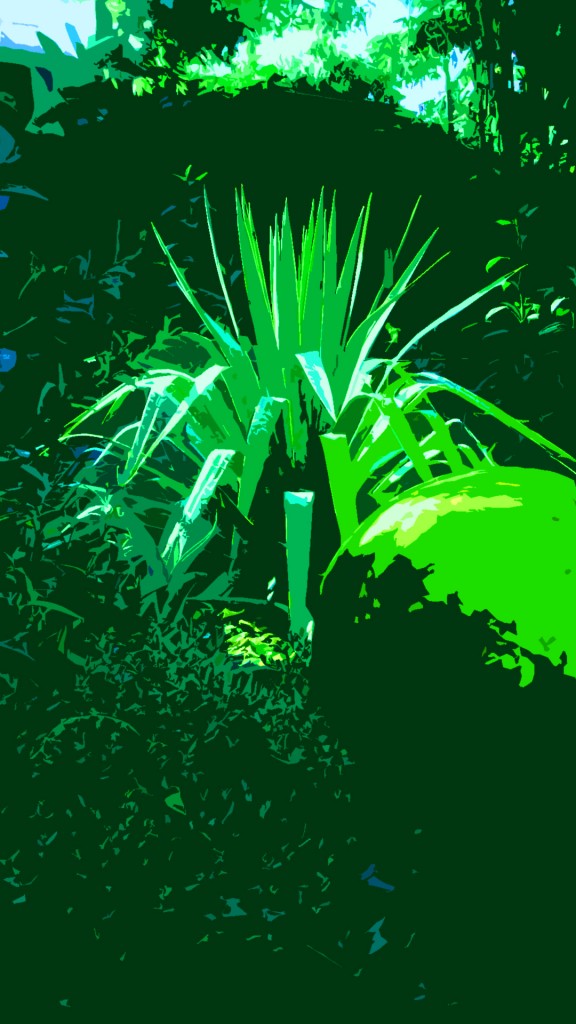
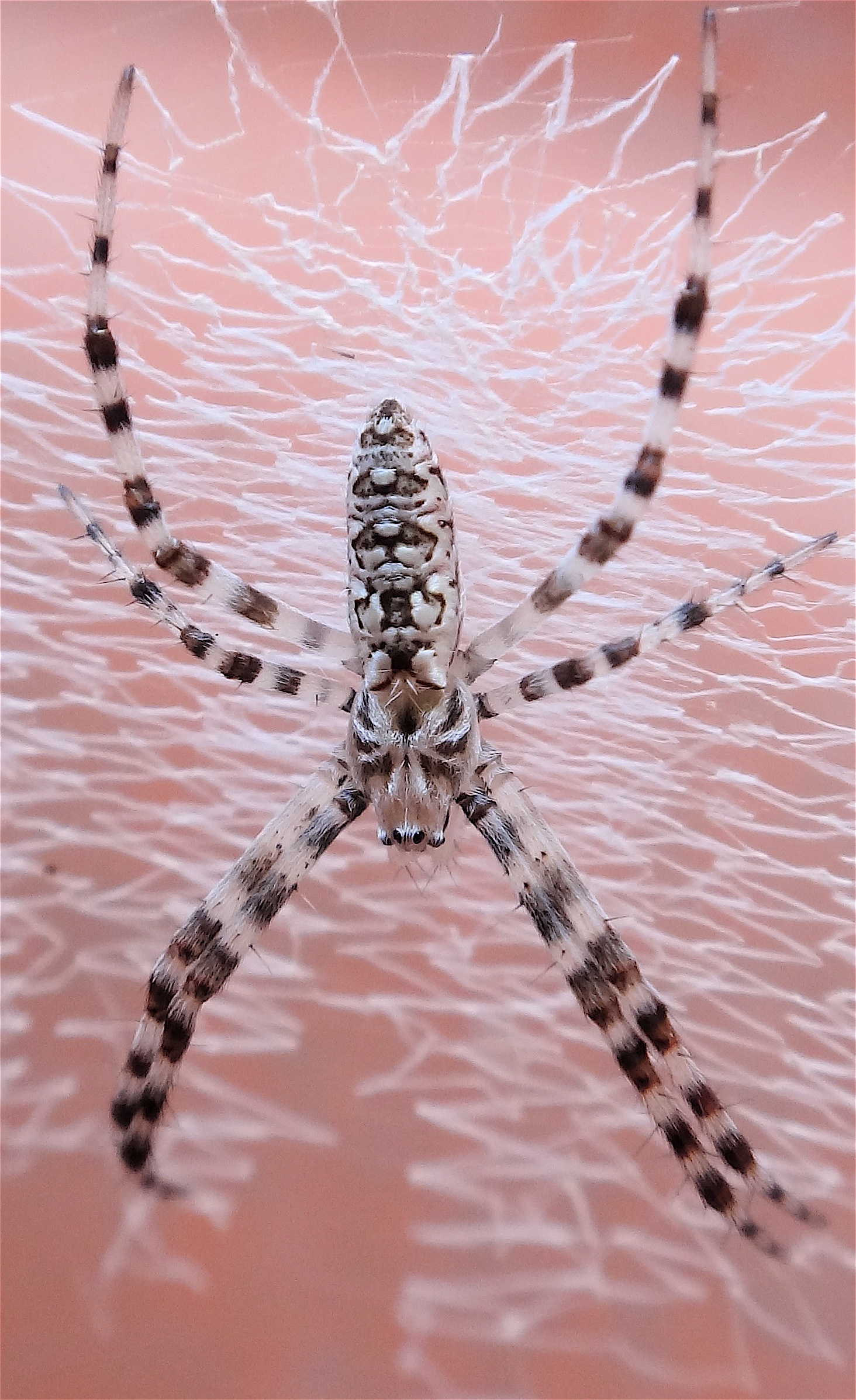

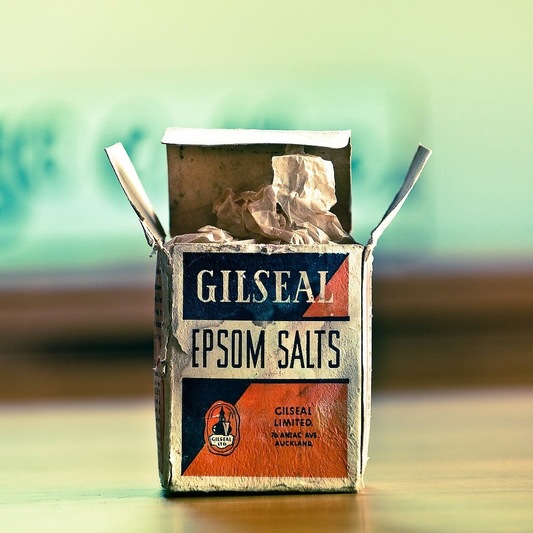

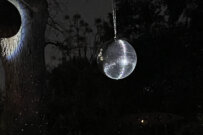





























































Comments on this entry are closed.
I think that Argiope insect just might be the “14th century plant Earth technique” punishment! Nice update on that garden. May as well make the shade enjoyable for people, since plants are limited for such a space. That dragon tree – now I see why it is so at home in San Diego, as I did not know where it originated, until you stated so!
Hi David.
I am officially sick of the weevils. Although I am no torturer, I am sure that being prodded to death with a rather large stick ranks up there with some historical 14th century hurt-methods.
Thanks on the shade garden, and yes it is always difficult on the plant front in these conditions.
That dragon tree is quite something isn’t it! Very martian.
ESP.
Any blog post with Dracena Draco, Severus Snape, and the Agave snout nose weevil is quite irresistible. I’m impressed with how you were able to work with that huge tree in the homeowner’s front yard. Your project turned out really good: the red urn looks great. Enjoyed all your beautiful photos, too.
Hi hb.
You can’t beat that infamous trio after all? Although I could do without the last one.
Glad you liked the front garden design, I want one of those red urns myself!
Thanks,
ESP.
I’m dismayed to hear that you are still losing plants to the agave weevil – and now a softleaf yucca has fallen victim. I’d heard that they are susceptible. Sigh. I went rather hard-core on the weevils in my former garden. I’m tempted to be proactively hard core in my new garden rather than wait for my first weevil casualty.
Hi Pam.
Yes the evil weevils are apparently still going strong, I was horrified when I dug up three Nazgul from the roots of this yucca plant. How did you go hard-core on yours? What did you use? Tell me your Preferred Potent Poison Pam (PPPP) :-)
ESP.
I think the home owners should have gone with the expert on design…you. Your original design was much better than the final out come. The large rocks look good, maybe with some sedum trailing over them though.
I have yuccas and agaves growing all over this place and have never noticed any dying of any thing. I sure hope I don’t get any of those snout nose beetles here. Maybe they don’t eat Twisted Leaf yuccas or Red Bloom yuccas, thats what I have the most of.
I am so glad to see you guys finally got a dog and what looks like a good one too. Every kid needs a dog. Maybe he’ll keep that damn cat in his own yard now. Did you put up fences in the side yards? If you need some cool gates I would build them cheap to free depending.
Hi Bob.
This client had an aesthetic sensibility that differed from mine in many ways, for this reason it was both challenging and interesting to me…I pushed…she pushed…and we ultimately arrived (usually laughing) on agreeable soil. It was a very rewarding process. I am really pleased with how this front garden was turned around in a week and yes, there are a lot of future planting opportunities for those large rocks.
Is it just me or are these weevils getting more prevalent? I hope you remain free of the Nazgul, Bobwise Gamgee.
Kumo is a great dog for being only 3 months old, and yes, the “waterbug” is having to learn the hard way that if you yank a dogs legs apart…you WILL get some puncture wounds :-) We are all well fenced in for now but I would like to think we will have some of your fantasy steel-work somewhere in our welded future.
Thanks Bob.
ESP.
This is frightening that the evil weevils have come to our side of the highway and are going after yuccas now. I will start keeping a closer eye on mine. Fabulous spider pictures!! Amazing!! And I love, simply love both the first rendition and final version of your front yard makeover.
Disturbing it is Linda…how dare they…I may just have to start using more and more sotols :-)
It is amazing how these garden spiders transform from their furry grey adolescence. My daughter spotted this one in an empty terracotta pot.
Glad you like the latest Install.
Thanks Linda.
ESP.
Rumor has it that imidacloprid (synthetic analog of nicotine) has been used with some success. You can find imidacloprid in the Bayer tree & shrub products. On a side note different forms of Agave lophantha may have a alkaloid that the weevils don’t like. This from a report from a friend in south Texas.
Thank you David for this interesting information and product to repel the Dark Lord (agave weevils) from our Texas gardens. I will certainly look into this product!
ESP.
ESP, I detailed my nuclear reaction to the evil weevils in this post: http://www.penick.net/digging/?p=509 Good luck.